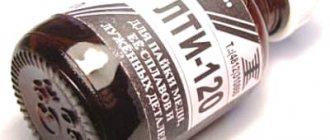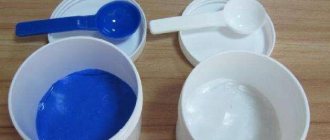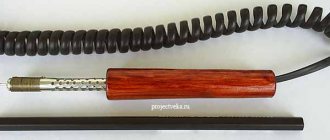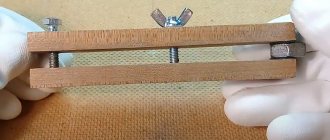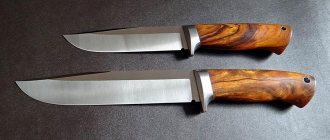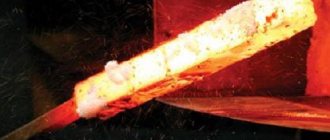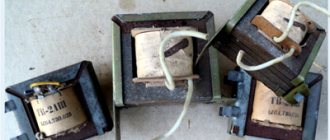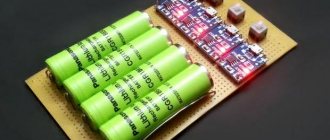Physico-chemical properties and composition
Before looking at how to melt rosin, it's worth considering what goes into it. The composition of the material is quite simple, since a person will need only two main components for preparation. most often this is rosin itself and alcohol, which is used as an organic solvent. With proper preparation and adherence to the technological regime, the final product looks like a homogeneous substance.
Using alcohol for liquid rosin
Water can be used together with alcohol, but it is used as an additional material, since it cannot dissolve the flux on its own. Factory brands also use additional corrosion inhibitors, additives, propanol and other elements.
The density of the liquid depends on the amount of rosin itself in the composition. The properties affecting soldering almost completely replicate those possessed by solid tallow rosin. But in the dissolved version they do not appear so strongly. Due to increased spreadability, the liquid gets into all the small irregularities that exist in the metal and this gives a much higher level of bonding than in initially solid flux brands. The main chemical property here is the neutrality of the environment, therefore, the composition is suitable for use with almost any part.
Making liquid rosin
Rosin is a natural material that is obtained from the resin of coniferous trees by evaporating turpentine. After processing, a solid translucent resin is obtained, which is used as a soldering flux. Rosin is used not only in its pure form, but also in combination with various chemical additives. Rosin is mainly used in amateur radio as a cheap and high-quality flux.
For soldering radio components and tinning printed circuit boards, it is very convenient to use an alcohol solution of rosin. Liquid rosin easily penetrates into all hard-to-reach places, both when soldering SMD components and conventional radio components, does not leave dirty marks on the board and, if necessary, is easily washed off with acetone or alcohol. Rosin easily dissolves the film of oxides formed on the surface of radio elements during the soldering process, and also reduces the surface tension of the solder melted by the soldering iron tip, allowing it to spread evenly over the entire surface of the soldering area.
In radio stores, the shelves are simply full of various expensive and cheap, chemical, acidic and natural fluxes based on pine rosin. There's a lot of choice, I don't want to take it. But as a real radio amateur, for the sake of experiment, I wanted to prepare an alcohol solution of rosin with my own hands. As my grandfather, an avid radio amateur, did.
Enough words, now I’ll start my experiment, I just can’t wait to see what happens in the end...
As always, I prepared very carefully for the experiment: I took two 20 grams. jars of pine rosin, 100 ml. pure 96° alcohol and an empty plastic bottle for preparing liquid rosin.
You definitely need to take new and clean rosin; dirty rosin, burnt by a soldering iron tip, will not work, because it will contain a lot of dirt and all sorts of impurities. Rosin can be dissolved in anything, in acetone, in all sorts of strange solvents, even kerosene. But the safest and non-toxic solvent for rosin, as you may have guessed, is 70° medical alcohol; you can also use 96°, it will dissolve even faster.
The rosin must be thoroughly crushed, I do this with such powerful pliers, right in the jar. The compression of the rosin crumbles into small pieces, which is very convenient; there is no need to do anything shamanic with glasses, mortars, crushers and other crap.
Now I pour it into a plastic bottle. There are exactly two jars of rosin here.
I fill this whole thing with alcohol, one to one. I have two jars, which is 40 grams of rosin, which means you need to pour in at least 40 milliliters of alcohol, maybe a little more. As they say, by eye. If all the rosin is not dissolved, I will add more. For such an interesting experiment, I donated a bottle of pure alcohol. What won't you do for the sake of science? Now I’ll mix this whole thing thoroughly. After about an hour, all the rosin should dissolve.
After an hour, the rosin had completely dissolved, resulting in a homogeneous, transparent honey-colored rosin-alcohol solution with a pleasant smell of pine rosin.
And now, as always the most interesting thing, I’ll see how liquid rosin will solder.
It turned out not bad, even better than store-bought flux (LTI-120, KE, FKEt, FKSp and so on), one might say it’s a little thicker.
Liquid rosin works, the experiment was a success! It solders perfectly and has such a pleasant light rosin smell.
RELATED ARTICLES ON THE TOPIC:
- Calculation of transmission on HF on-line Calculation of transmission on-line…
- Lightning strike It happened last summer in the western United States, in the mountainous desert state of Utah. I came to these places at the invitation of the head of a small company, a former radio amateur, to live a little and work for the benefit of the company. Soon, after setting up a temporary home, I began to pull off the amateur radio hardware and try to get out...
- Roofing filter in a modern transceiver Currently, the English term “Roofing-filter” is often used in descriptions of modern transceivers for amateur bands. But what does it mean?...
- Adding your data to the QRZ.com server Many radio amateurs have difficulty registering on the QRZ.com server. Let's try to briefly tell you how to register or correct your data on the QRZ.com server...
- Dicibels in Communications The unit of measurement “decibels” can be heard everywhere. However, not everyone who often uses it knows what is hidden behind it. We provide some information for information for beginners and refreshment of the memory of experienced amateurs. The decibel (dB) is named after the famous inventor of the telephone, Alexander Graham Bell. For practical reasons...
- Determination of wire diameter abroad. AWG and SWG When designing equipment based on foreign literature, radio amateurs have to deal with determining the diameter of the wire, because the latter in English-language literature is designated in the form of conventional numbers (caliber). There are two standards. AWG - American Wire Gauge - American standard, and SWG - Standard Wire Gauge - British standard. Defining...
- Call signs of amateur radio stations in Kazakhstan On an ongoing basis, only one call sign is issued for an amateur radio station for individual use in the Republic of Kazakhstan. UN series prefixes are issued to all amateur radio stations of the Republic of Kazakhstan, UO series prefixes - after selecting the UN series prefix resource, UP series prefixes - to special amateur radio stations, UQ series prefixes are...
- Telegraph key from paper clips To make a telegraph key you will need plastic or plywood, or any other insulating material suitable for the job. These can be pieces of plastic from old monitors, computers, printers, televisions, etc. with flat surfaces. We will need a couple of paper clips, screws and nuts. You can use…
Materials and tools for manufacturing
Before melting rosin, you need to prepare by selecting the required number of materials and tools. As consumables, you will need the brand of rosin itself, alcohol, and water if you need to dilute the material.
The tools you will need are:
- A burner or gas stove on which you can heat the liquid for subsequent dissolution;
- Spoon for mixing and dosing the created powder;
- A mortar or other container where you can crush solid rosin into crystalline powder to the finest possible state;
- An object that can be used to crush solid rosin in a mortar;
- Container for storing prepared flux.
Technology and proportions
Considering further points on how to dissolve rosin at home, you should dwell in more detail on the practical part. First of all, you should start by preparing the rosin. It needs to be split into small pieces and then crushed to a powdery state. This is necessary so that the material dissolves better and faster during the process.
Ground solid rosin
The substance itself is very fragile, so there should be no problems with this process. Liquid rosin should not have sediment.
After obtaining the crystalline powder, or during the start of its preparation, you should begin to heat the solvent. The higher its temperature, the faster it will act. The proportions may vary, but most often they take 60% solvent and 40% powder. When the liquid has reached the desired temperature, you can begin to mix the powder. Gradually stirring the substance with a spoon, you need to wait until all the particles turn into a liquid state. At the same time, the mixture should change color to yellowish.
You can add the powder to the solvent until a precipitate begins to form. This means that the ability to dissolve has already come to an end. To increase this parameter, you need to increase the temperature or volume of the liquid. Once you have prepared the required amount of rosin, you can let it cool if everything is very hot, or use it right away. In this state, the material can be stored for quite a long time.
What you need for cooking
Before you start working on creating liquid rosin for soldering, you need to prepare all the ingredients and tools. For melting you will need rosin, water to dilute the thick mixture and alcohol. The tools you will need are:
- a gas stove or a special burner; solid pieces and liquid will be heated on them until they dissolve;
- a spoon to stir and dose the substance;
- a cup or mortar where rosin is crushed until fine;
- wooden masher;
- a jar for storing the resulting crushed flux.
Instructions for making flux
So, how to make soldering flux with your own hands? It all depends on the destination. If you need to solder thin wires, you can use rods with a diameter of 1 mm. We will make them ourselves.
We will need a small bottle or any other vessel with a flat bottom. We make a hole in the bottom with the diameter we need (in this case 1-2 mm). We take lead or tin and melt it using a gas burner. Pour it into our bottle. Molten metal will begin to flow out of the hole; you need to prepare the surface in advance. You can use a sheet of tin, for example. The resulting “rods” must harden, then they need to be cut. Experienced craftsmen use special molds to make rods. Also look at the review of bga soldering flux. There are also liquid fluxes, fluxes in the form of a gel or paste. They are now very popular and are available from any manufacturer. This is not surprising, because such fluxes do not cause oxidation, prevent the formation of corrosion, do not conduct current, and the soldering area does not need to be cleaned after work. This flux can also be made at home.
We will need rosin crystals, which need to be crushed into powder. Wrap the crystals in a thick cloth and tap them with a hammer (preferably a wood hammer or a meat mallet). Mix the powder and alcohol in a one to one ratio. Alcohol can be purchased at a pharmacy. It is advisable to mix in a glass container, such as a small jar. Thoroughly mix the alcohol with the powder and place the jar in hot water. Mix everything thoroughly again until it has a homogeneous consistency. Ready! The resulting flux can be used with a medical syringe or poured into an empty nail polish bottle.
Soldering may release substances that are hazardous to your health. Use protective gloves, a mask and goggles in your work. Do not purchase fluxes from little-known manufacturers, do not chase the lowest price. If possible, make your own flux. Follow safety precautions. This way you will reduce the likelihood of poisoning from flux vapors.
What is the disadvantage of regular rosin for soldering?
Rosin is obtained from coniferous trees by making cuts in the trunk. Next, all excess components are evaporated, and only those that make up the original mass of pine resin remain. So, as a result of simple manipulations, we get rosin, which we are all used to soldering with.
In principle, rosin is an excellent flux. Perhaps its only drawback is that it is hard and fragile. To solder with regular rosin, you first need to heat up the soldering iron and then dip its tip into the rosin. This will allow it to melt and then be used for soldering.
Therefore, without thinking twice, the craftsmen came up with a composition of liquid flux based on rosin. It has many more benefits than regular solid rosin.
Ointment with beeswax and rosin
Rosin is a light yellow, brittle and hard substance that consists of resinous substances obtained from coniferous trees after distilling off turpentine. Depending on what type of raw material it is obtained from, it comes in different types. Resin rosin is obtained after distilling turpentine from purified resin. Extraction - after extraction of resinous wood, most often pine, with gasoline. Talwood is prepared by the method of fractional distillation of tall oil.
Wax is a unique beekeeping product. It is produced in the body of worker bees and is secreted onto the surface of wax mirrors, where it hardens in the form of wax scales, which serve as material for honeycombs. At different times of the year the product has a different color. In spring it is white, and by autumn it turns yellow, sometimes dark brown.
Ointments for healing purulent wounds, trophic ulcers, burns and dermatitis with beeswax and rosin
To prepare the ointment, you need to take twenty-five grams of rosin, beeswax and vegetable oil. Place in a steam bath and heat until dissolved. Then add fifty grams of propolis. Bring the ointment to a boil, but do not boil. Apply the ointment to the wound twice a day and cover with a sterile bandage. Use until complete recovery.
Ointment for resorption of tumors with beeswax and rosin
Ointment for resorption of tumors with beeswax and rosin
The ointment is used externally for cysts on the ovaries and uterus, fibroids, fibroids and prostate adenoma. To prepare the ointment, you will need one hundred grams of pine rosin, which must be melted in a water bath and added twenty grams of wax. After the wax has dissolved, you need to pour in twenty milliliters of sunflower oil.
When the mixture acquires a homogeneous structure, you need to take a linen napkin, the dimensions of which are ten by fifteen centimeters. You need to apply a warm mixture to it and apply it to the lower abdomen. Shave your hair first. The napkin should remain on the body for three days, then it must be replaced with another one.
We recommend reading: Storing wax
The finished ointment should be placed in a jar. It hardens, so it needs to be steamed before each use. A total of eight napkins will be needed for the course of treatment. The solution prepared at a time is enough for four napkins.
Sources:
- https://progermetik.ru/articles/nuzhno-li-delat-maslo-dlya-propitki-dereva-svoimi-rukami.html
- https://howmakes.com/180/
- https://narodnymisredstvami.ru/kanifol-naruzhnoe-narodnoe-sredstvo/
Motor oil for aluminum soldering
Soldering aluminum and aluminum-based alloys can be difficult. On an aluminum surface, upon contact with air, a persistent and refractory oxide film is formed. It creates a serious obstacle to tinning.
It is generally accepted that soldering aluminum requires a strong flux. But you can do without a special tool if you have at hand:
- solder POS-61;
- engine oil;
- soldering iron with a power of 100 W or more.
Need to:
- Clean the soldering area with a knife or sandpaper.
- Apply a little oil.
- Tin the aluminum.
Negative sides
The disadvantages include several factors that prevent the use of the material in certain situations.
- In the absence of experience, low activity of elementoa may require additional processing. Use requires some skill to reduce processing time.
- Hyperscopicity may prevent the substance from releasing visible vapor during processing, which will lead to corrosion of the compound in the future.
- Available for application to small-sized assemblies of a certain metal composition. The product is applied to simple metals; other types of fluxes are used to process larger joints.
- The fragile design of the material can cause problems during transportation. Easily crumbles under mechanical stress.
There are other types of fluxes that actively interact with metal. Such elements interact with metal and consist of zinc chloride or ammonium. After soldering, the substance is removed from the product as much as possible, because corrosion processes are possible. Neutral substances, such as rosin, do not interact with metal and do not conduct electricity.
Main advantages
Each material has certain advantages and disadvantages; rosin has proven itself in soldering operations for many years and is still used today. Main advantages of the material:
- Dielectric properties help avoid unnecessary contacts on the solder surface.
- Affordable price compared to analogues, available for free sale at any radio electronics outlets.
- The soldering process using the product can be carried out regardless of the environment, humidity level, or air temperature.
- The properties of the product are protected from exposure to moisture and have a long shelf life.
- Prevents the formation of rust deposits on metal structures and degreases the product.
Rosin for soldering
It is allowed to use a natural product without personal protective equipment, due to the lack of toxicity. The process of use is not difficult; you can independently make the necessary concentration and type for convenient work.
Do-it-yourself alcohol-rosin flux SKF
Author: Vladimir Vasiliev · Published November 7, 2015 · Updated August 29, 2018
Hi all! I am glad to see you all on my amateur radio blog dedicated to electronics and other technical creativity. Today it’s Saturday and it’s November outside the window, so we’re getting ready for the cold - winter is just around the corner.
And I have an article for you, which may not be very long, but it will definitely bring you a bit of useful information. Today I will talk about SKF alcohol-rosin flux, how you can prepare it with your own hands, and also where you can buy SKF flux. Read the article further and find out everything... but don't forget to subscribe to updates!
How to choose the right flux
Even with knowledge of the varieties and technical characteristics, not every person understands how to choose a flux. For safe soldering, neutral fluxes should be chosen. They are suitable for working with a variety of parts, but when soldering large components, the work will be slow.
To speed up the process, you can use medium-active fluxes. Such compositions are suitable for working with various metals. For working with large parts, silver solders are ideal.
The best substitutes
It is not always possible to find solder at home to solder broken contacts or wires. In such situations, repairs can be carried out without purchased compounds. You can replace flux with several substances:
- amber;
- fat;
- "Aspirin";
- resin.
Before starting work, Aspirin must be dissolved in a small amount of liquid.
Resin on wood
Methods of obtaining
Varieties of rosin come from the method of production, composition and physical state. The main differences in production methods are the substances from which the composition is extracted.
Obtaining rosin
The material is divided into three categories: gum, tallow and extraction resin for soldering.
- Gum rosin is produced by processing the resin of coniferous trees; the main plant is pine, due to its availability and prevalence. The main distinguishing point can be seen in the absence of fatty acids, the use of which is not available in some works.
- The extraction base is produced by extracting gasoline and the main component - a share of pine tree wood. It is distinguished by a lower temperature softening threshold and dark color. The melting point starts from 52 degrees, the acid number varies from 145 to 175. The presence of fatty acids in the composition is 10%; if the substance is chemically clarified, it will be more similar to a gum substance.
- In sulfate-cellulose production, a by-product is released - tallow rosin. It is divided into several grades according to quality and purpose, the method of production from sulfate soap. More expensive varieties are not inferior in properties to the natural product.
A detailed acquaintance with the basis of the craft leads to the conclusion that it belongs to the category of fluxes. In cases where the required item is not at hand, you can use a welding drill.
Fluxes made from hydrochloric and phosphoric acid
You can also make two active fluxes for soldering, using hydrochloric and phosphoric acid for these purposes. The first flux recipe is prepared using hydrochloric acid and zinc granules, which dissolve in it. For one liter of hydrochloric acid you will need about 0.5 kg of zinc granules.
Even steel products can be soldered with a flux based on hydrochloric acid and zinc. Also, ammonia is often added to the composition of this flux, the same percentage as zinc granules. In this case, the flux can be used for soldering various metals.
A good flux for soldering stainless steel and nichrome can be made from phosphoric acid. You need to apply liquid fluxes with a thin brush, and solder using them only in a well-ventilated room. As for storage, acid-based fluxes are stored in closed glass containers with a narrow neck.
